
Growing a Magnolia in a pot
And enjoy its beautiful flowering up close.
Contents
Each year, we eagerly await the early and explosive flowering of Magnolia soulangeana. In summer, we delight in the beautiful, fragrant cup-shaped flowers of Magnolia grandiflora against its exotic foliage. Magnolias are essential trees that we all want to adopt. In addition to these two well-known species, there are multiple species and varieties, forming a family of bushes and trees ranging from 2 m to 15 m in height. Highly floriferous, they are easy to grow as long as they are given a sheltered position, in full sun or partial shade.
The smaller varieties are suitable for pot cultivation: they require little maintenance, grow slowly, resist air pollution, and exhibit quite good hardiness. In this category of dwarf subjects, you have a plethora of choices in flower colours and shapes, as well as appearances, in both deciduous and evergreen types.
Discover which Magnolia to choose and how to grow it in a pot, and you can finally enjoy it even without a garden, on your terrace or balcony.
Why grow a Magnolia in a pot?
Even though planting in the ground is always preferable for bushes, there can be several reasons to choose to plant them in pots. The first is simply not having a garden, yet still wanting to seriously green up your terrace or balcony to create your little Eden. A Magnolia can be grown in a pot on a terrace or large balcony, especially since it withstands air pollution well in the city. If you have a garden, there are still a few reasons to choose to place it on your terrace. Is your garden exposed to all winds, while your terrace is sheltered and warmer with a south-facing wall? Do you have very chalky soil? Do you want to bring the highly fragrant flowering of certain Magnolias closer to your nose?
In any case, be aware that growing bushes, especially larger specimens, in pots will require serious watering. If you can collect rainwater, you will then set up a virtuous system to keep your little paradise in good shape.

The Magnolia ‘Genie’ in a pot on a terrace
Read also
Magnolias: planting, pruning and careWhich varieties to choose?
Magnolias grow quite slowly, varying by variety, which is an advantage for pot planting. There are essentially two types of Magnolias: the deciduous, the most well-known being Magnolia soulangeana, which flowers in spring on the still naked tree, before the leaves replace the flowers. The evergreens, on the other hand, flower in summer on their exotic foliage. Their famous representative is Magnolia grandiflora. Magnolias can reach heights of 2 m to 15 m at maturity, depending on the species. They are mainly classified into two sizes: bush, from 2 m to 5 m, and tree, from 10 m to 15 m. Magnolias suitable for pot planting should be chosen from the smaller bush-sized specimens.
Deciduous Magnolias
Let’s explore the deciduous Magnolias, where the smallest cultivars can be found. For example, consider Magnolia ‘Black Tulip’, a dwarf Magnolia with large purple flowers, or Magnolia brooklynensis ‘Eva Maria’ with its subtle orange-pink flowering and silver foliage.
Also worth mentioning is Magnolia lolanthe with giant pink-lilac flowers, and Magnolia denudata ‘Sunrise’ with sophisticated cream and fuchsia flames.
The flowers of Magnolia stellata ‘Waterlily’ and Magnolia loebneri ‘Leonard Messel’ are star-shaped, white and double for the former and soft pink for the latter. The latter two are slightly fragrant.
All are hardy down to -20°C. Also, keep in mind that while the flowering of deciduous Magnolias is remarkable and exceptional on the bare wood, the foliage is more mundane, so it may be wise to surround it with other potted plants that will take over in interest.
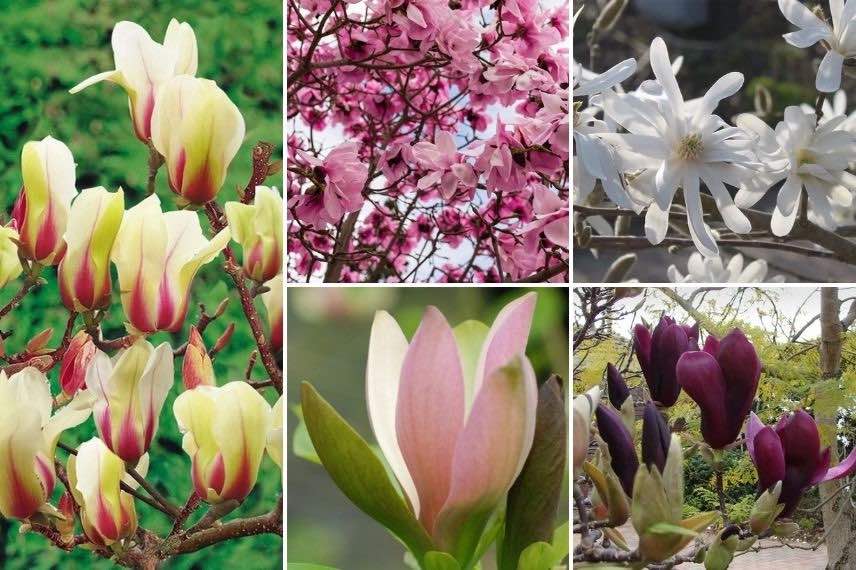
Magnolia ‘Sunrise’, Magnolia lolanthe, Magnolia stellata ‘Waterlily’, Magnolia ‘Black Tulip’ and Magnolia brooklynensis ‘Eva Maria’
Evergreen Magnolias
The evergreen Magnolia features exotic-looking foliage, with thick, glossy leaves, medium to dark green. This category includes Michelias, which are associated with the Magnolia family and flower quite quickly, while some Magnolias take several years to produce their first blooms. All are fragrant, moderately to strongly depending on the species. Their scent is also exotic, fruity, ranging from lemon to banana. Their hardiness is around -12°C, so it may be necessary to provide a place to shelter them in winter. The flowers of evergreen Magnolias stand out for their pure contrast with the foliage and the beauty of their cup shape.
Notable examples include the Magnolias (Michelias) ‘Fairy Blush’, ‘Fairy White’, and ‘Fairy Lime’, whose names refer to their colour variations: pink, white, and cream yellow. Also mention Michelia ‘White Caviar’ with pink stamens and Michelia yunnanensis ‘Gail’s Favorite’ with cream flowers and prominent yellow stamens.
The Magnolia grandiflora ‘Little Gem’ is a dwarf version of the famous Magnolia grandiflora and is adorned with large cream-white tulips.
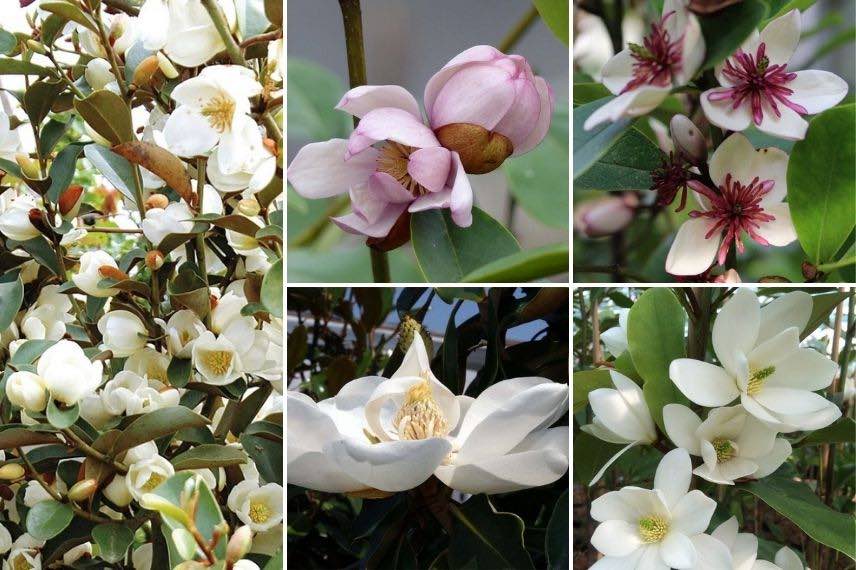
Magnolia (Michelia) yunnanensis ‘Gail’s Favorite’, ‘Fairy Blush’, ‘White Caviar’ and ‘Fairy White’, Magnolia grandiflora ‘Little Gem’
Discover other Magnolia
View all →Available in 0 sizes
Available in 1 sizes
Available in 1 sizes
Available in 1 sizes
Available in 1 sizes
Available in 1 sizes
Available in 1 sizes
Available in 1 sizes
Available in 2 sizes
Available in 1 sizes
Which pot to choose?
What type of pot?
If you choose a terracotta pot, which is aesthetic but porous, the substrate inside will dry out more quickly. In all other materials, it retains moisture longer, which is desirable for a bush that is thirsty for water. Of course, you also have aesthetic considerations; you can match the colour of the pot to the flowering colour of the Magnolia you have chosen. Opt for a round shape or a more angular one. In any case, ensure there are drainage holes in the bottom of the pot. They not there? Equip yourself with a drill to create them yourself!
What size?
Choose the largest pot you can find, at least 40 to 50 cm in diameter. Magnolias have a root structure that is wider than it is deep, so select a container that is very wide and at least 50 cm deep. Planting in a pot will limit their growth and spread, but still provide a pleasant habitat for this long-lived bush.
Read also
10 magnolias with pink flowersWhat substrate?
Prepare a slightly draining, neutral to acidic, humus-bearing substrate. Install drainage at the bottom of the pot using clay balls, pumice (heavier), or gravel. Choose a potting soil of good quality, as it has superior water retention. In our shop, you can select potting soil based on its pH using the various filters at the top of the page; opt for soil with a low pH (around 6). If you are placing your Magnolia on a balcony, there are lightweight potting soils available.
You can also create a mixture of compost, garden soil, and potting soil in equal parts. Plan for a plant mulch.
Planting a Magnolia in a pot
In cold regions, plant in pots in March or April once the frost periods have passed, and in mild climates, plant between September and November or in spring.
- Soak the root ball in water while preparing the pot.
- Install a drainage layer at the bottom of the pot a few centimetres deep.
- Pour substrate into the pot to fill one third.
- Position the root ball so that it is upright and the collar of the plant is level with the surface of the pot.
- Carefully fill with substrate, pressing down as you go, until 2 cm from the top of the pot.
- Water generously.
- Place a few centimetres of organic mulch on top of the pot.
What exposure?
The first condition for exposure is to shelter your Magnolia from cold winds. A wall to the southeast, south, or southwest, well-sheltered to protect the tender evergreens and the buds of the deciduous Magnolia in spring. Next, Magnolias need a sunny location but will benefit from partial shade or dappled light under the scorching rays of the hottest hours, particularly Michelias. In pots, it is particularly recommended to provide them with some shade to keep the substrate cool for longer.
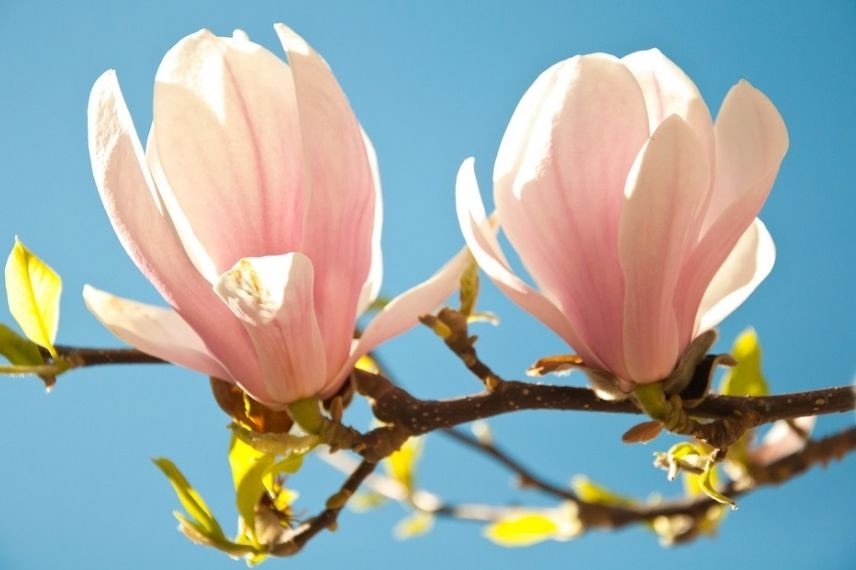
Sun, but also a bit of shade are good conditions for a potted Magnolia
Watering and fertilising, maintenance
Water when the substrate is dry in the top few centimetres of the pot. Check regularly, especially during flowering periods and in summer. This means you will likely water twice a week in spring and every two days in summer. Adjust these recommendations based on your region, observing the substrate and the plant. When deciduous varieties lose their foliage in late autumn, you can stop watering until growth resumes.
Once or twice a year, add compost to the surface of the pot and/or worm compost, incorporating it by scratching. Also amend the soil with an organic fertiliser such as ground horn. Check your mulch and renew it if necessary.
No pruning is essential. However, if you wish to prune your Magnolia, here is an article explaining how to proceed.
→ https://en.promessedefleurs.eu/gardening-tips/advicesheet/magnolia-when-and-how-to-prune/
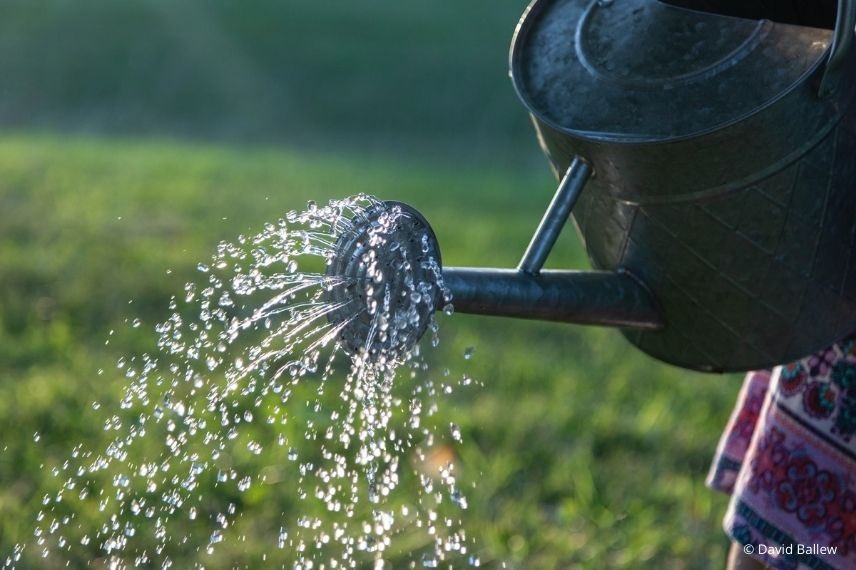
Keep the watering can nearby for your Magnolia
- Subscribe!
- Contents

































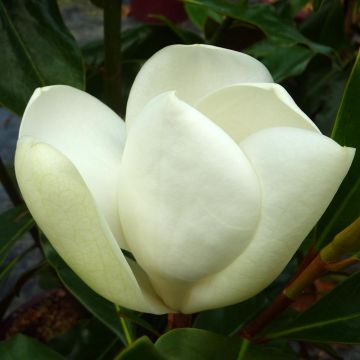
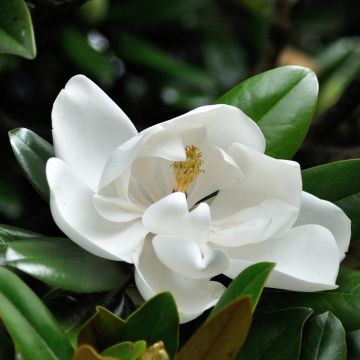
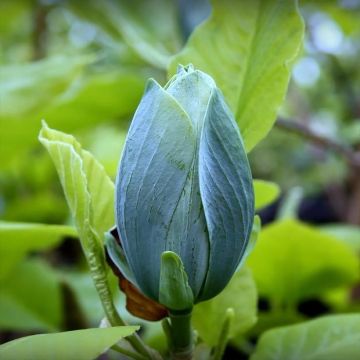

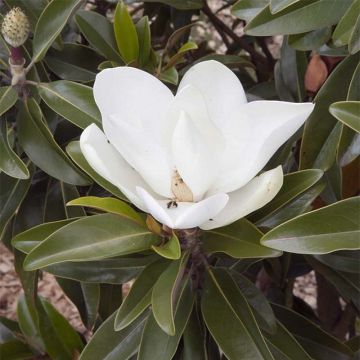
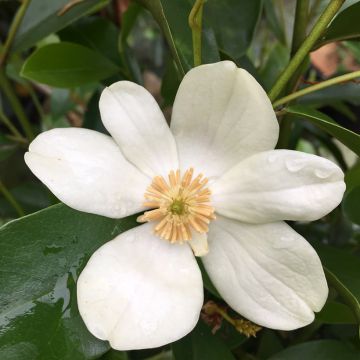
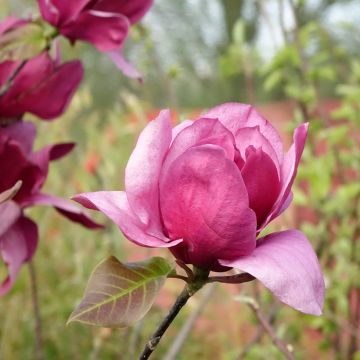
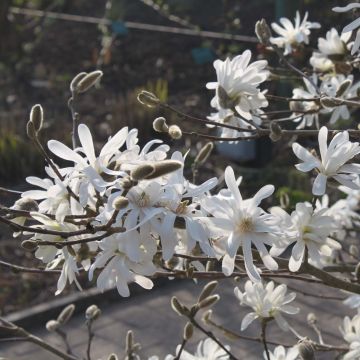
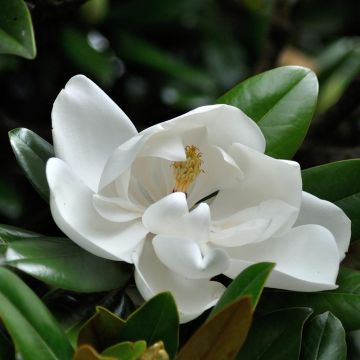
Comments